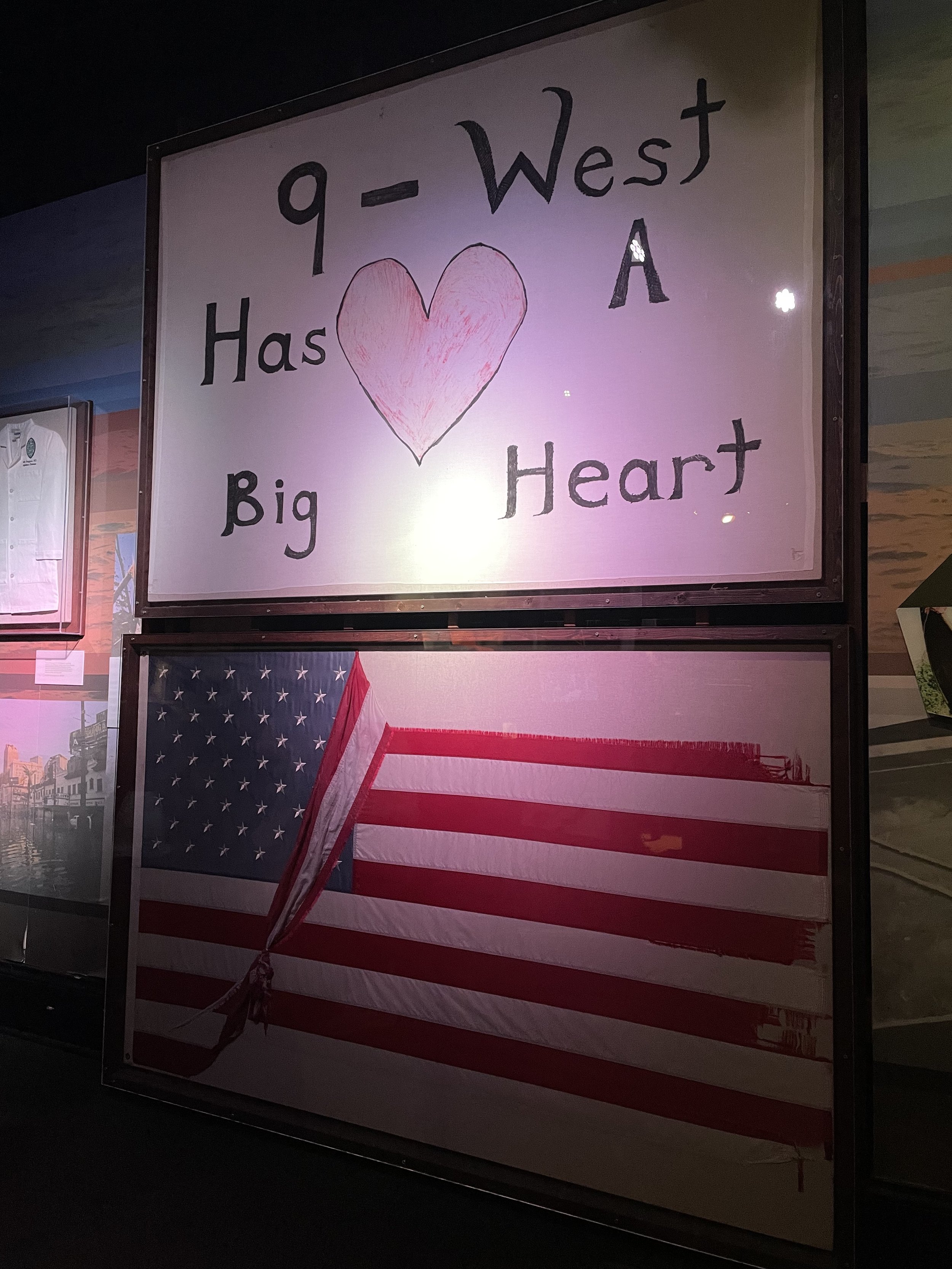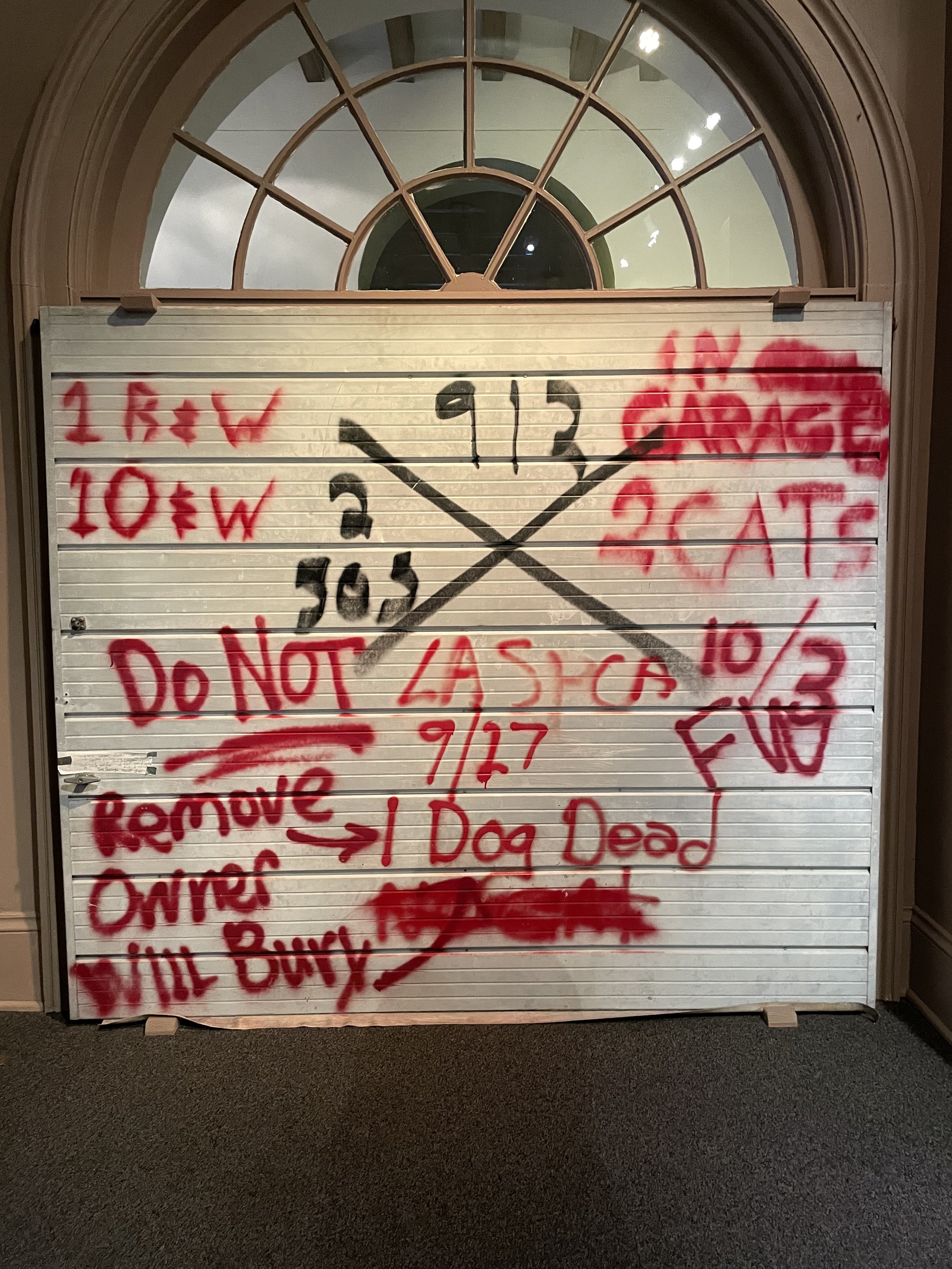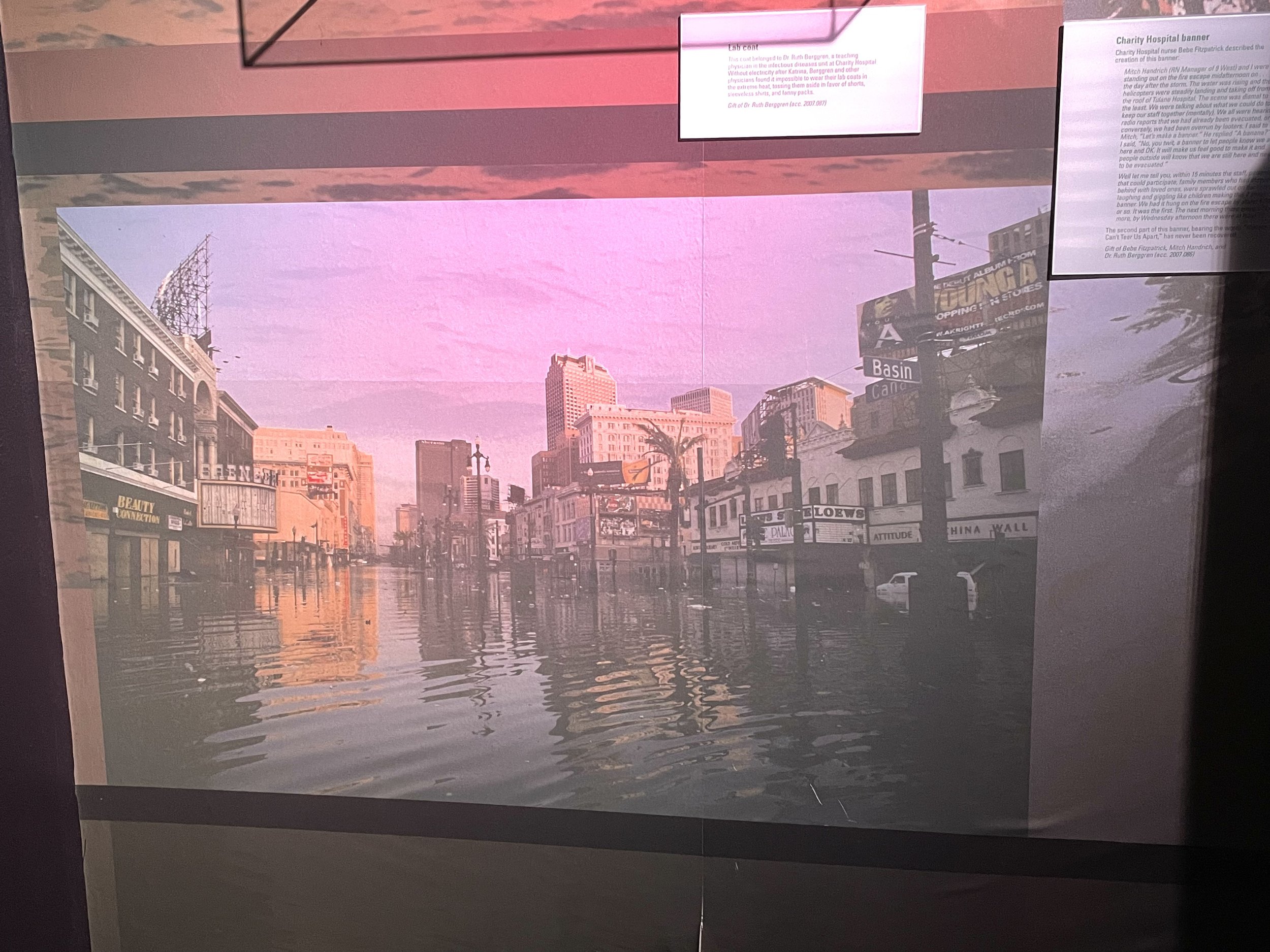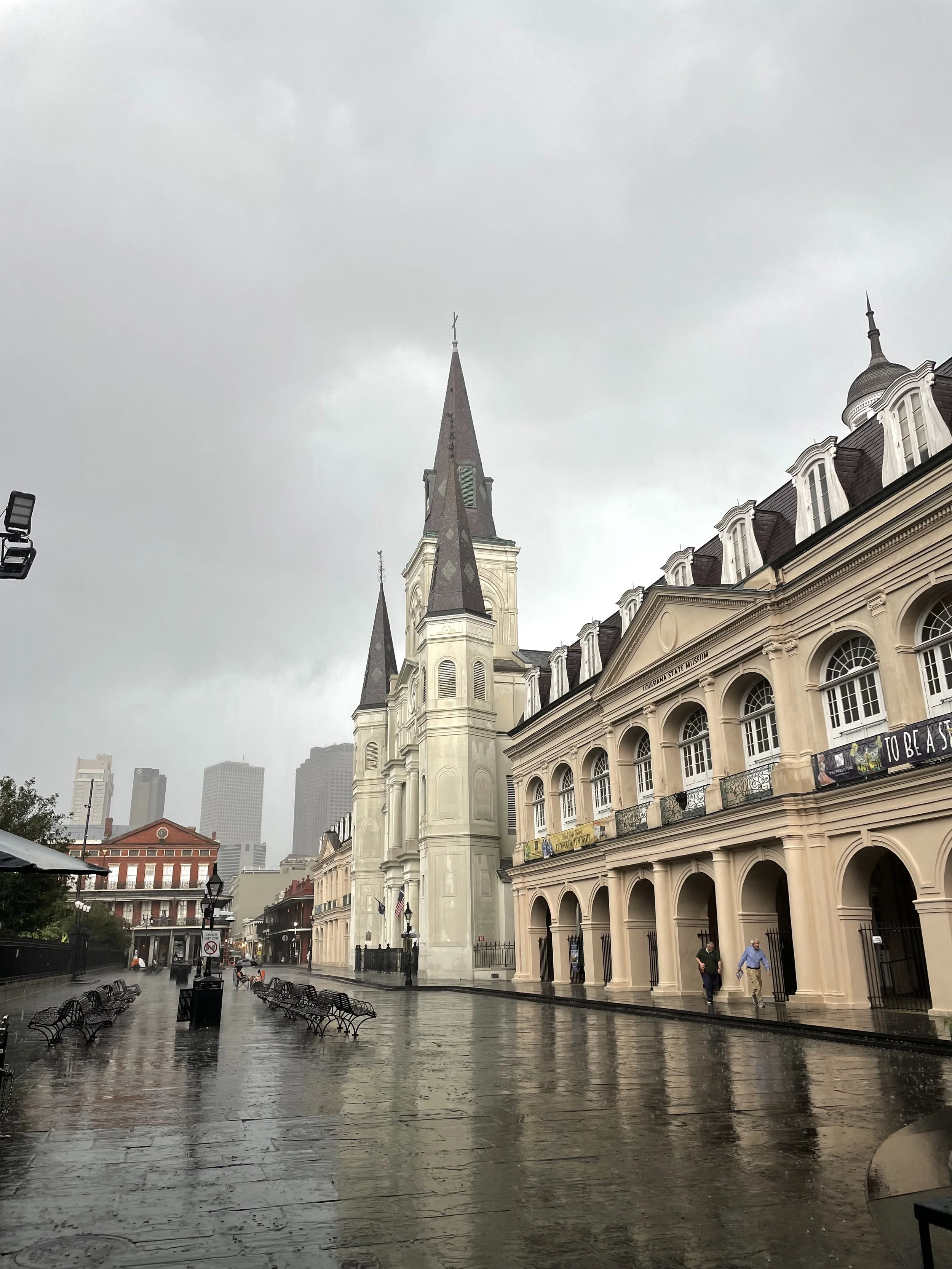A comparison of the ocean temperatures between the year of Katrina (left) and this year (right)
I tuck myself into bed after a long day of sightseeing and being in the sun. I know it’s not the healthiest habit but my nightly routine is not complete without a quick scroll through TikTok (just ask Cecilia). It’s the usual funny videos, easy recipes, storytimes, etc. I guess ever since I arrived in New Orleans, my feed has slowly been adjusting to more localized recommendations like restaurants to try or suggested things to do in the city. I scrolled to the next video, and it caught my attention. It’s a video from Alexis Amber and it shows a tweet that compares the record temperature anomalies for the year of Hurricane Katrina with the forecasted temperatures for this year. And the difference is scary…
I glance at the date – May 22, only nine more days until this year’s hurricane season officially starts. Naturally, after seeing that one TikTok, I go down the rabbit hole and do my own investigations on forecasted predictions for the 2024 year. Videos from Accuweather, Tracking the Weather, and residents of Florida, Louisiana, and Texas filled me in on what is to be expected. A general consensus is that it will be record breaking and above average, or in other words, “a supercharged season from hell.” Yikes! I also learned that a new scientific paper published in the journal of the National Academy proposed the question: with global warming and the potential for larger, more intense hurricanes in the years to come, do we need to add a category six to the Saffir Simpson scale? I am no expert on hurricanes whatsoever, but I found this extremely alarming after all the information I have gathered. Looking at a list of the strongest hurricanes on record, they are all classified as category fives with wind speeds ranging from 175-190 mph. However, a video clip from meteorologist Mike Iscovitz from Houston discusses the possibility of adding another category and makes a valid point: what if some of the category fives have been classified as a category six, and would it have made any difference in preparation or in the loss of lives? It’s crazy how much you can learn after stumbling upon a particular video, but the timing was surely freaky. I uncovered all of this while I was in the middle of reading The Yellow House by Sarah M. Broom. I have just finished reading Movement III which focuses on Hurricane Katrina and its path of ruin in Sarah’s life.
Getting caught in the rain in Jackson Square
Not to run an old joke into the ground, but as a native Southern Californian, I really do not get to see a whole lot of weather (rain). Every day for the past couple days, rain, thunder and lightning have been part of the forecast. I would say I am intimidated but also in awe of the thunderstorms I have experienced so far. Intimidated because the thunder can be LOUD and in awe because of how quickly the storms can roll in and how heavy the rain can pour. Thankfully, I have only experienced thunderstorms on this trip. Hurricanes, however… Those scare me because I have seen the damage that has been done by previous ones from years past.
I am no stranger to natural disasters. Just not the ones that involve water. Wildfires pose a threat to my family and our home each year. In November of 2018, the Woolsey Fire forced me, my family, and countless other families to evacuate. The fire burned over 96,000 acres and scorched the entire hill directly across the street from my house. I remember the night we evacuated to my grandma’s house, watching the live coverage on television, and seeing my neighborhood being surrounded by flames. We were unable to sleep as we were only thinking about if we would have a home to return to. Reading about how Katrina completely uprooted Sarah’s life in The Yellow House was something I resonated with. Although I did not lose my house, just the mere thought of how close I was to losing the only place I have ever called home was enough to send me into despair. I honestly have no clue how Sarah dealt with the loss of her home. I don’t know how anyone can deal with the loss of their home. Sarah and I share the same kind of relationship with our houses in the sense that we have never lived anywhere else. Memories, good and bad, are also residents that live within the walls of your home. Having to say goodbye to material possessions as well as the emotional ties at the same time is something I never want to have to do for real.
““The house contained all of my frustrations and many of my aspirations, the hopes that it would one day shine again like it did in the world before me.””



Visiting the Presbytere and viewing exhibits that educate people about the impact of Hurricane Katrina put a lot of things into perspective. For instance, I was only three years old when Katrina hit, so I do not hold any personal memories of the event, but seeing the amount of loss in property and, more importantly, human lives was sincerely eye-opening. In her memoir, Sarah Broom reflects on how her entire family along with her community in New Orleans East experienced displacement because everything was now underwater. The Broom family had to scatter and evacuate to different parts of the country, the fear of knowing the chances of having a home to go back to being slim to none. This is one of the worst feelings in the world because the worrying and nerves are constant. My experiences with natural disasters and evacuations thankfully have never led to my home being completely destroyed, otherwise I would struggle with finding a substitute or replacement for it. Broom wrestles with the idea of what home means to her after the Yellow House is ultimately demolished, and she comes to a realization:
““Houses provide a frame that bears us up. Without that physical structure, we are the house that bears itself up. I was now the house.””
This has to be one of my favorite quotes from the memoir because Broom assures readers that all is not lost. In the literal sense, houses are physical structures that give us support, stability, and security. When they are destroyed, the feeling of this physical support can be lost. However, by finding the strength within yourself, you gain the properties of a house and become a person who can be resilient on their own and provide strength to themselves and other people around them. Seeing the empty lot of where the Yellow House once stood at 4121 Wilson Ave was surreal. Even looking at the other empty lots in the Lower Ninth Ward with my own eyes gave me goosebumps. It’s one thing reading about the destruction left behind by Katrina, but actually seeing the neglected spaces of ruins and grass forces you to reflect on the countless lives that were forever changed because of this event. Despite all the gnarly predictions that are in the hurricane forecasts this year, I pray that we never see the same level or worse amounts of destruction that Hurricane Katrina left nearly almost 20 years ago.









